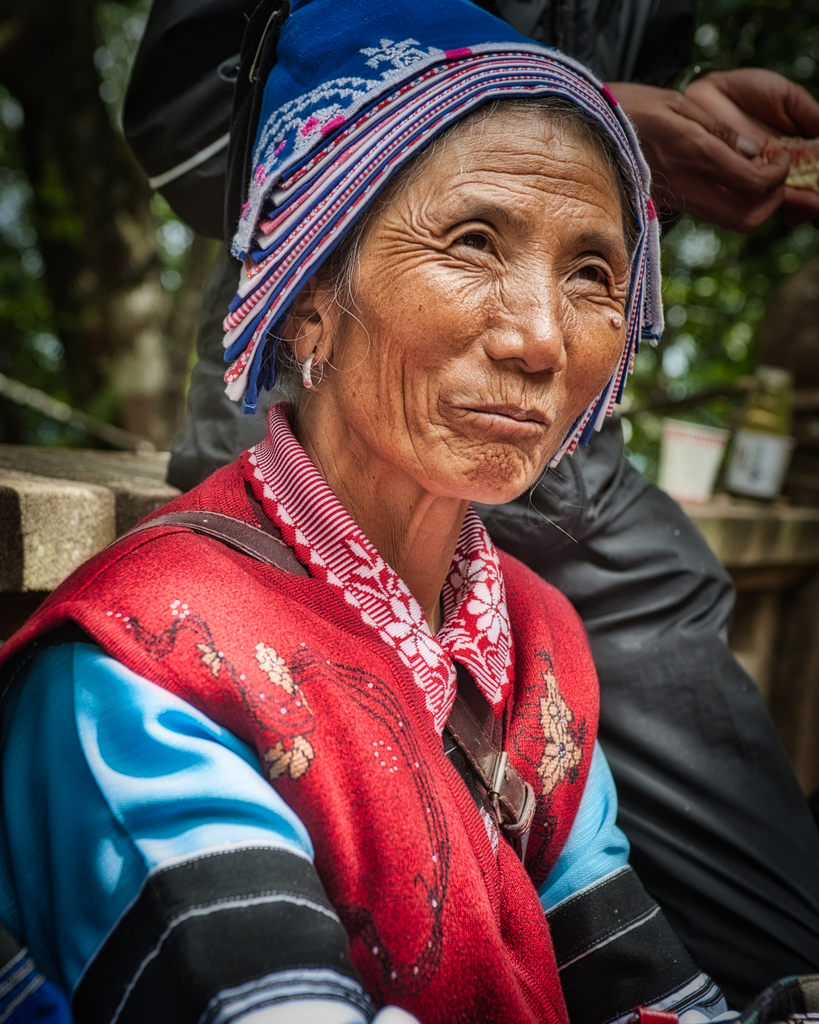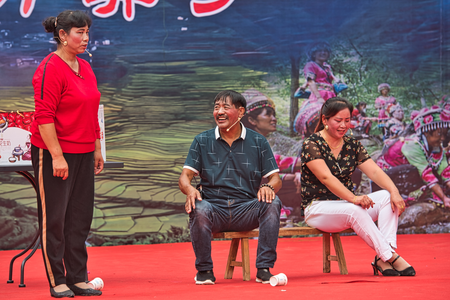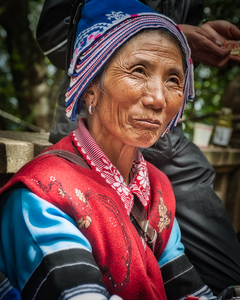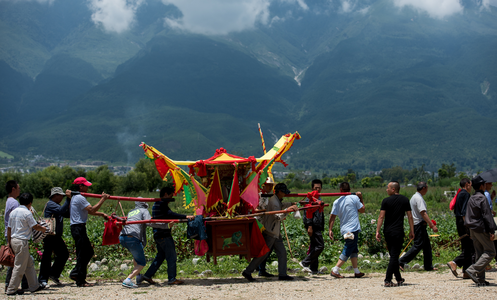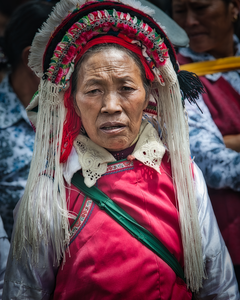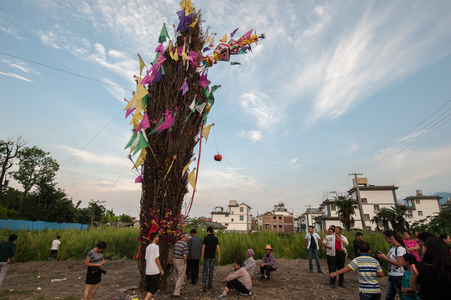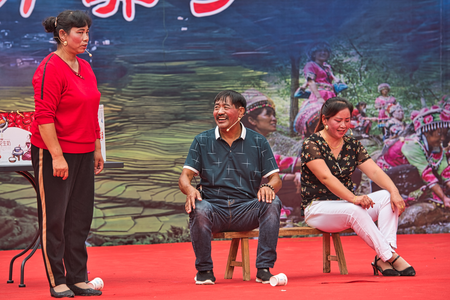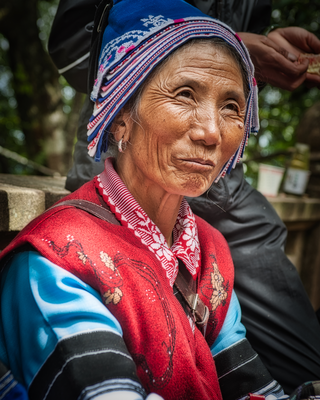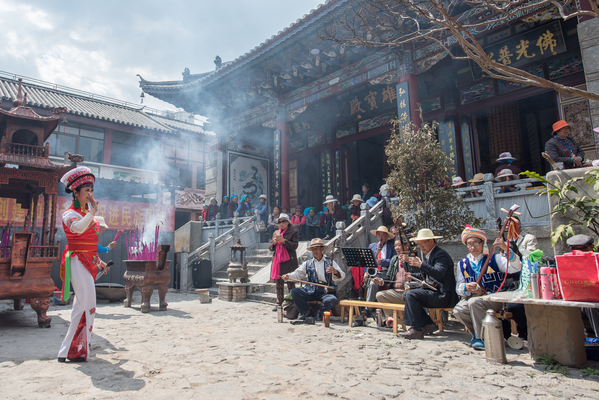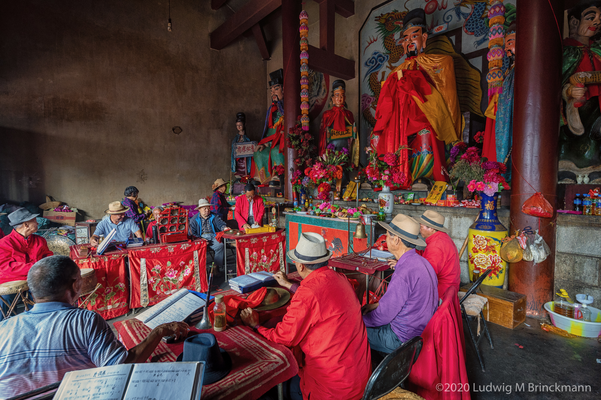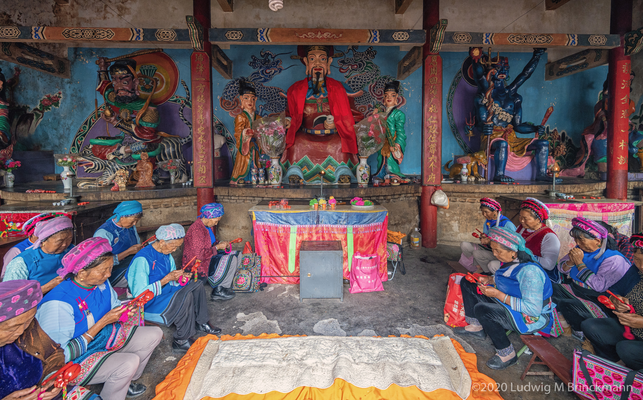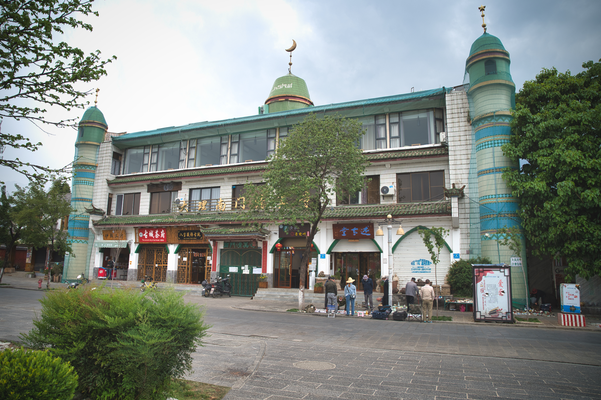Raw pork skin, together with raw pork meat and sometimes even raw pork liver are traditional delicacies in Dali.
While Shengpi 生皮 is now of course also regularly served in Bai restaurants catering to the tourist trade, few local people would order this dish in a restaurant: not only they are aware that eating raw meat can have serious health implications, but because the eating of Shengpi is closely linked to the slaughtering of a pig on occasion of a large feast.
Wedding, funerals, house building ceremonies: these all require a large number of guests to attend. These events reinforce feelings of kinship and mutual reciprocity. In poorer times, these were really exceptional events in a single person's life: a birth, a wedding, building a new house and a funeral.
But these days these events are not that rare: the Bai love to congregate and eating and drinking is a central part of socialising. So, nowadays most people in Bai villages can expect to attend several banquets a year: it if is not the neighbour's child getting married, then someone will have a house building ceremony. Weddings are more and more scheduled during the New Year period, simply because this is the time when people come back home from the often far away locations where they are working during the rest of year. Other events in the Bai calendar also fall into the New Year period: there are many more religious events during this time of the year than any other. And of course, while 'eating' in Chinese is expressed 'eating rice' 吃饭, for such events slaughtering a pig or even two is called for.
The tradition of slaughtering pigs and preserving some of the pork for use in later months in the time preceding Chinese New Year has even given Chinese cured pork its name: 腊肉. The character 腊 is used to indicate the last month of the Chinese lunar year 腊月, but historically stems from a ritual that was conducted after the winter solstice (and thus falling into the 12th month). Thus the tradition of 'Killing the New Year Pig' 杀年猪.
Slaughtering a pig is a job for the men and the boys: pigs are not stupid and seem to be able to feel that what is coming for them is nothing good: so restraining a pig before the slaughter is no easy job, requiring a few men to cooperate: first tying a pigs legs, throwing it on its side and placing it on a table for the kill by sticking a blade into it aorta and letting it bleed to death. From the fatal stab to death is just a few moments, but during this time the pig will often try to make a final, but already futile attempt of escape. After that, the pig is taken outside as the pig's skin and bristles need to be burned off. This was traditionally done by burning a hot straw fire around the carcass before scraping off the bristle. Nowadays, often a blow-torch is used for the purpose. Only after the carcass has been carefully scraped off is a pig's body cut open and the innards carefully removed as to avoid any spillage onto the meat. The head is removed and then the pig is cut into pieces, ready for cooking.
While all this will not take more than one hour, the workers and bystanders will have got hungry: eating a bit of the just burned off skin and the meat below is getting a taste of the meat and seems a sort of 'manly' ritual. The Bai routinely eat the raw skin 生皮, some raw meat 生肉, all dipped into spicy sauce, which might or might not kill any germs, but raw liver 生肝 is something for the more adventurous or foolish as the health risks are well known.
Shengpi 生皮 thus is not a dish one orders in a restaurant: Shengpi is an essential experience of rural live, embodying a year's of hard work culminating in the ceremonies and festivities of Chinese New Year, often the only time a year when a Chinese farmer was not just eating rice and vegetables, but stuffing himself with meat.
